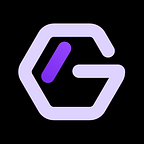Using GraphLinq to Bring OpenAI to Life with Real-Time Blockchain Data
GraphLinq is a no-code platform that enables developers to create automated workflows without the need for any coding experience. Recently, GraphLinq has integrated OpenAI API into its IDE, making it possible for users to add OpenAI to their workflows and create bots for Telegram, Twitch, and more.
With this update, GraphLinq IDE version #1.3.6 also went live!
With the integration of OpenAI, developers can now create intelligent bots that can perform various tasks, such as generating personalized messages, answering complex questions, and analyzing data, among others.
Here is a step-by-step guide on how to integrate OpenAI into your GraphLinq workflow:
- Navigate to https://platform.openai.com/
- Sign Up/In the go to your Profile and click on “View API keys”
3. Click “Create new secret key”
4. Copy your API key (make sure to save it as it appears only once)
5. Visit ide.graphlinq.io, connect your Metamask wallet, and load the OpenAI Test graph, you can download it from here: https://marketplace.graphlinq.io/templates/96
6. Select the OpenAI Test, click on the Secret String value, and paste your API keys.
7. Write your prompt in the String Value Box.
8. Now execute the graph by clicking on launch.
Here’s a snapshot of a sample graph we ran on the IDE:
You can also run the OpenAI API Locally on Your Computer with GraphLinq Engine, here are a few easy steps to achieve that:
To get started, navigate to the GraphLinq IDE at https://ide.graphlinq.io/ and connect your Metamask.
Step 1: Load the OpenAI GLQ API graph and open it. Download it for free from here (you’ll have to connect metamask in Polygon Network on marketplace, soo marketplace will support GLQChain): https://marketplace.graphlinq.io/templates/95
Step 2: Paste your API key to the Secret String value
Step 3: Launch your graph.
Step 4: Go to “My Graphs” on GraphLinq Dashboard Interface and click on “copy API link”.
Step 4: Paste your GraphLinq Hosted API URL in this command:
curl --location 'https://api-hosted.graphlinq.io/YOUR_API/chat?chat_id=0x0000000' --header 'Content-Type: application/json' --data '{
"prompt": "What is graphlinq?"
}'Replace “YOUR_API” with the API you copied in Step 3. Also, replace “What is GraphLinq?” with your desired prompt.
Step 5: Run Code
Open your terminal (or command prompt) and paste the code. Press enter, and you will get the response directly from OpenAI on your local computer.
(if you are not a macOS user, Download Curl from this link https://curl.se/download.html)
That’s it! With these simple steps, you can easily run the OpenAI API locally on your computer using GraphLinq.
GraphLinq’s integration with OpenAI blocks allows users to create intelligent bots that can analyze and respond to real-time data without coding skills. This is a game-changer for anyone who wants to leverage the power of AI in their blockchain applications. In addition to the OpenAI integration, GraphLinq has added several new features such as Twitch blocks, dictionary creation, and random number generation. These features enable developers to create advanced workflows and automate complex tasks with ease. For example, you can use the OpenAI blocks to link them with Discord, Telegram, Twitter & Twitch to make different kinds of bots that let you fetch responses directly from OpenAI (GPT) to your bot in real time.
With GraphLinq, the possibilities for automation are endless. Whether you’re a developer or not, GraphLinq’s no-code platform allows you to create advanced automated workflows and use the latest technologies. Stay tuned for more updates and developments from GraphLinq Chain. Don’t forget to follow us on Twitter and join our Discord community to stay up-to-date with the latest news and events.
Join us on our socials to stay updated:
Twitter: https://twitter.com/graphlinq_proto
Telegram: https://t.me/graphlinq
Discord: https://discord.gg/w3qG33vNp9
Youtube: https://www.youtube.com/channel/UCV2RJ7hYJwBSGuEsnDU5Wog
Website: https://graphlinq.io/
